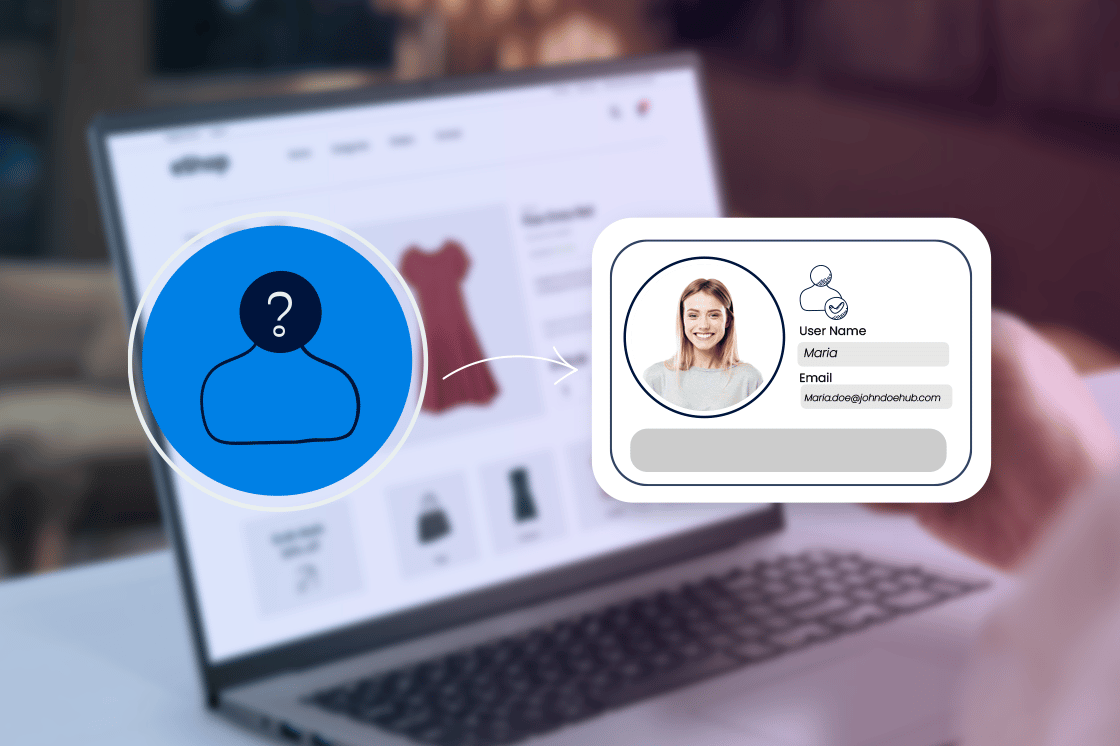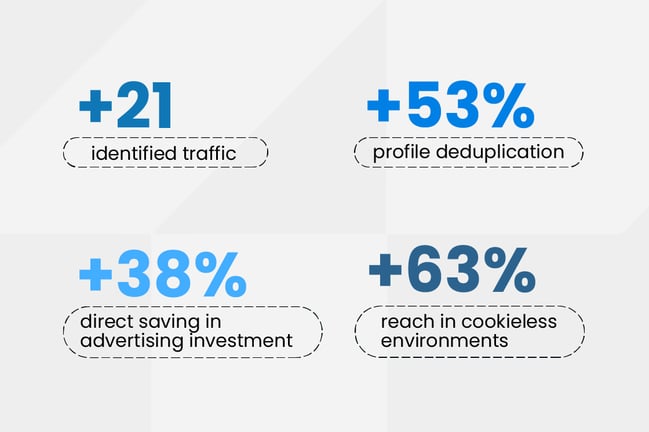
The Essentials in Brief:
- Brands today don’t need more data: they need clarity of identity.
- Deterministic, first-party identification transforms anonymous browsers into known audiences under a brand’s full control.
- This approach drives measurable gains in reach, precision, and media efficiency, while forming the foundation for AI-ready marketing.
- A leading European consumer brand recently achieved significant improvements in identified traffic and advertising efficiency proving that identity-first strategies deliver both compliance and performance.
From fragmented data to meaningful connections
Marketers have never had more data or less understanding of who their customers truly are.
Cookies are disappearing, privacy regulations are tightening, and digital identities remain scattered across channels, devices, and brands. As a result, analytics measure sessions instead of people, and performance marketing continues to reacquire customers who are already known.
The industry has reached a turning point: the next evolution of digital marketing won’t be built on more data, but on better identity.
Real connections happen when brands recognise the same person across every touchpoint, in real time and with consent. This is the essence of first-party identity marketing: a strategy that unites accuracy, privacy, and relevance in one framework.
Why identity now defines marketing effectiveness
For years, companies have invested in data management platforms, customer data platforms, and marketing clouds, all promising to unify the customer view. Yet most still struggle with fragmented insights and inconsistent attribution.
The problem isn’t the lack of technology; it’s the lack of identity coherence.
Without a persistent, owned identifier, brands rely on probabilistic matching, cookies, or external data providers, all of which are fading fast. Deterministic identity, built on first-party signals, changes that paradigm. It enables marketers to:
-
Recognise visitors even when they aren’t logged in.
-
Activate audiences across domains and channels in real time.
-
Control reach and frequency in paid media with precision.
-
Measure results consistently across the entire customer journey.
This shift redefines marketing ROI. Instead of chasing impressions, brands can now invest in recognition, relevance, and real relationships.
The new marketing foundation:
first-party identity
Building first-party identity begins with trust and transparency.
Every interaction, a website visit, app engagement, or email click, generates a behavioural signal. When those signals are connected through a Unified Marketing ID (UMID), they form a deterministic identity graph under the brand’s full ownership.
This identity graph isn’t another data silo. It’s an activation layer that feeds existing systems; analytics, CRM, media, and personalisation engines with consistent, high-quality identifiers.
The result is not just cleaner data, but smarter marketing. Decisions that used to rely on fragmented metrics now rest on verifiable, real-time insight. It’s the difference between assuming and knowing who you’re talking to.
A real life application: from anonymous traffic to actionable insight
A major European multibrand group recently put this approach into practice.
With several popular brands and millions of records in its customer database, the company was struggling to maintain data quality and connect interactions across domains. The rapid decline of third-party cookies made things worse, limiting its ability to control advertising frequency and measure true reach.
By deploying a first-party identity activation hub, the group unified its fragmented signals into a single, deterministic view of each customer.
The system connected anonymous and known profiles in real time across websites, CRM, and paid media using a privacy-by-design identifier that doesn’t depend on email or cookies.
The impact was measurable within weeks:
-
+21% increase in identified traffic
-
+53% improvement in profile deduplication
-
38% direct savings in paid media
-
63% greater reach in cookieless environments.
What mattered most wasn’t just the numbers, but the shift in perspective.
The marketing team moved from managing data to building relationships, turning anonymous interactions into consented, recognisable, and valuable engagements.

Identity as the bridge between marketing and AI
Artificial intelligence dominates every marketing conversation but its success still depends on one essential ingredient: the integrity of the underlying data.
AI cannot optimise what it cannot understand. Probabilistic or duplicated identities feed inconsistent signals into algorithms, reducing their accuracy and credibility.
That’s why deterministic, first-party identity isn’t just a marketing solution: it’s an AI enabler.
When a brand owns its identity graph, it can feed machine-learning models with trusted, consented, and enriched data.
This creates a virtuous cycle:
-
Identity provides clarity → better data quality.
-
Better data enables AI → smarter targeting, attribution, and personalisation.
-
AI amplifies identity → more relevant and efficient marketing outcomes.
With this foundation in place, brands can explore predictive analytics, personalised recommendations, or media optimisation with confidence knowing that every decision is built on verified identity, not guesswork.
Leadership through identity: connecting teams and technology
Identity transformation isn’t purely technical, it’s organisational.
Building a first-party identity strategy requires marketing, CRM, analytics, and technology teams to collaborate under one shared objective: delivering a coherent, measurable, and privacy-safe customer experience.
Leadership is critical here. CMOs and Heads of MarTech must champion the shift from channel-centric metrics to identity-centric performance. The ROI of marketing now begins at the moment of recognition: when a brand understands who it is engaging, on which channel, and with what consent.
In this sense, identity becomes both a business strategy and a trust framework. It brings transparency to data usage, accountability to media spending, and credibility to customer relationships.
The road ahead: truly connecting in a privacy-first era
The marketing landscape is evolving toward transparency, accountability, and control.
Brands that depend on third-party identifiers will soon face diminishing returns. Those that invest in first-party identity will gain resilience, agility, and long-term competitive advantage.
By unifying identity deterministically, companies can finally truly connect, not only with their customers but with their own data ecosystem.
They can turn every interaction, whether anonymous or known, into the beginning of a measurable and meaningful relationship.
Identity isn’t a technical add-on. It’s the strategic layer that powers modern marketing, enables AI responsibly, and builds lasting trust between people and brands.

FAQ:
1. What does “first-party identity” mean in practice?
It’s the ability for a brand to recognise individuals through its own, verified data — not via cookies or third-party providers. It ensures control, consent, and accuracy.
2. How does deterministic identity differ from probabilistic models?
Deterministic identity connects data to verified individuals using secure, first-party identifiers, while probabilistic models rely on assumptions and device matching. The former guarantees precision and compliance.
3. Can brands adopt this approach without re-platforming?
Yes. Solutions like Teavaro’s Identity Activation Hub integrate server-side with existing MarTech stacks, enriching current tools instead of replacing them.
4. How does this respect privacy regulations?
All processes are governed by privacy-by-design principles. Consent management is built into the identity framework, ensuring data use is transparent and compliant with GDPR and similar laws.
5. What business results can be expected?
Most companies see immediate improvements in audience identification, attribution accuracy, and media efficiency with sustained benefits as first-party identity becomes the foundation of all digital engagement.





